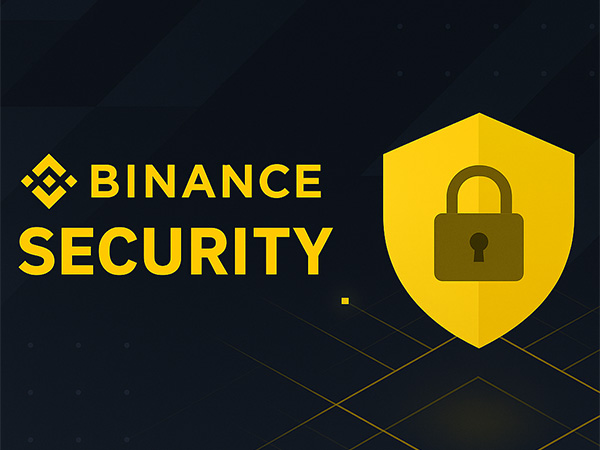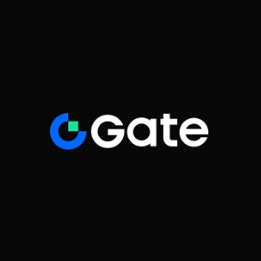Is Binance Safe? 2025 Security Assessment and Risk Prevention Guide

What Is Binance?
Binance is the world’s largest cryptocurrency exchange, founded by Changpeng Zhao (CZ) in 2017. It currently serves over 258 million users across more than 100 countries and supports over 350 cryptocurrencies and 80 fiat currencies in spot, futures, staking, and other types of trading. Its core value proposition is attracting all types of investors through high liquidity (over $18 billion daily trading volume) and low fees (maker fee as low as -0.015%). Binance has also built a complete ecosystem including BNB Smart Chain (BSC), an NFT marketplace, and the Launchpad token launch platform. In 2025, Binance continues integrating AI-powered risk control tools and compliance upgrades, but regulatory challenges remain a key variable in its global expansion.
Binance’s Security Features
Binance uses a five-layer defense architecture, combining technological and financial safeguards:
-
Asset Storage Security:
98% of user funds are stored in offline cold wallets. Hot wallets use MPC-TSS (Multi-Party Computation – Threshold Signature Scheme) technology, with private keys sharded and distributed across military-grade bunkers on three continents. Funds can only be moved with the coordination of five geographically isolated authorized officers, significantly reducing single-point-of-failure risk. In Q1 2025, a hot wallet signature vulnerability led to an abnormal $20 million outflow, but the system triggered alerts within 47 milliseconds and fully recovered the funds. -
Account Protection:
Binance enforces two-factor authentication (2FA) and has upgraded to 3D liveness biometric verification. This analyzes micro-expressions and pupil reactions to verify human identity, with a false recognition rate of just 0.0001%, effectively preventing identity forgery. To counter SMS spoofing attacks, Binance plans to roll out a message channel verification feature to distinguish authentic official messages. -
Risk Reserve Fund:
Binance maintains a $1 billion SAFU insurance fund (funded by 10% of platform trading fees) to cover extreme events like theft during spot trading. However, note that margin liquidation and default on savings products are not fully covered. -
Real-Time Auditing:
Binance publishes daily Proof of Reserves (PoR). In Q2 2025, its reserve ratio reached 102.3%, verified monthly by the Mazars accounting firm. An additional $450 million insurance fund is in place for derivatives to address clawback risks.
Legal and Regulatory Issues Facing Binance
Binance’s global regulatory status varies by region:
-
Strictly Restricted Regions:
Since 2019, Binance’s main site has been banned in the U.S., and users must access Binance.US (with reduced functionality). The UK, Netherlands, and Canada terminated services in 2023–2024 due to anti-money laundering violations or lack of licenses. Belgium ordered Binance to exit due to EU financial law breaches. In 2024, Binance was fined $4.3 billion for violating U.S. anti-money laundering laws, setting an industry record. -
Compliance Progress Regions:
Binance holds MiCA transitional licenses in several EU countries including France, Italy, and Spain. In the Middle East and Southeast Asia (e.g., UAE, the Philippines), it operates through localized entities to meet regulatory demands. Although the SEC closed its lawsuit against Binance in 2025 (alleging illegal services for U.S. users), Binance is now required to submit regular independent audit reports. Some concerns remain about the transparency of third-party custodial assets. -
Emerging Risks:
Although the Philippines was removed from the FATF “gray list,” regulators warned that offshore platforms like Binance may exploit “regulatory arbitrage,” potentially resulting in further access restrictions.
Why Should I Use Binance?
Binance’s core strengths lie in its cost efficiency and complete ecosystem:
-
Superior Liquidity:
Major trading pairs (BTC/USDT) offer bid-ask spreads of ≤0.1%, support instant execution of large orders, and average daily volume is $18.2 billion (June 2025 data), supporting arbitrage and high-frequency strategies. -
Fee Advantage:
Spot trading taker fee is 0.025% (lower than Coinbase’s 0.6%). Limit orders (maker) earn 0.015% cashback, with an additional 25% discount for using BNB to pay fees. -
Integrated Features:
Beyond spot/futures, Binance offers staking (e.g., 1.2% APY on BTC), an NFT marketplace (aggregating OpenSea listings), a Web3 wallet (multi-chain asset management), and Jumpstart token sales, enabling one-stop asset allocation. -
Beginner Friendly:
Simplified interface integrates fiat on-ramps (Apple Pay/Visa), includes an education center and paper trading, reducing entry barriers.
What Are the Risks of Using Binance?
Users should be aware of three main risk categories:
-
Regulatory Uncertainty:
In some countries (e.g., the Philippines, Brazil), sudden policy changes may interrupt services or freeze assets. U.S. users accidentally accessing the main site may trigger compliance reviews. -
Technical Vulnerabilities:
Despite multi-layer protection, hot wallets and cross-chain bridges remain key targets for hackers. The $20 million abnormal outflow in Q1 2025 exposed the limits of real-time risk response. -
User-Side Security Weaknesses:
SMS phishing attacks can spoof official numbers to trick users. While biometrics are strong, they can’t defend against social engineering (e.g., mnemonic leaks). High-leverage futures (up to 125x) may cause instant liquidations.
How to Stay Safe on Binance
Users should adopt proactive defense habits:
-
Enable Advanced Verification:
Beyond basic 2FA, bind a hardware security key (e.g., YubiKey) or use an authenticator app (e.g., Google Authenticator). Disable SMS verification due to SMS spoofing risk. -
Diversify Asset Storage:
Only keep trading funds on the exchange. Move large holdings to cold wallets (e.g., Ledger/Trezor). After binding withdrawal addresses, enable a 24-hour delay for additional safety. -
Keep Learning & Use Tools:
Complete Binance Academy’s security courses (which reduce scam risk by 83%) and subscribe to on-chain monitoring services (e.g., whale address alerts). Avoid clicking unofficial links. -
Control Futures Risk:
Limit any single leveraged position to ≤5% of your capital. Use take-profit and stop-loss orders, and avoid emotional trading based on FOMO.
How Does Binance Compare to Competitors?
The following table compares three major platforms across security, fees, and regulatory dimensions (2025 data):
| Evaluation Metric | Binance | Coinbase | Kraken |
|---|---|---|---|
| Security | MPC-TSS cold storage + $1B SAFU fund | Quantum-encrypted channels + FDIC | Circuit breakers + AI risk alerts (0.01s) |
| Spot Fees | Taker 0.025%, Maker cashback 0.015% | Avg 0.6% | Taker 0.26%, Maker 0.16% |
| Regulatory Status | MiCA transitional license in EU, banned in U.S. | Fully U.S.-compliant, SEC-audited | Licensed across U.S. & EU, bank-level risk control |
| Liquidity | $18.2B daily volume, spread ≤0.1% | Strong fiat channels, moderate liquidity | Deep USD trading pairs |
| Feature Coverage | Full suite: spot/futures/NFT/staking/Web3 wallet | Primarily spot; Coinbase Pro supports derivatives | Futures, margin, OTC trading |
Data source:
Binance leads in fee and feature breadth, while Coinbase and Kraken offer more regulatory stability in the U.S. and Europe.
Conclusion: Rational Choice, Proactive Defense
Binance remains the top choice for high-frequency traders and diversified investors due to its elite liquidity, negative fee structure, and broad ecosystem—especially in compliant regions like Europe and Southeast Asia. However, its security depends on a dual defense model of both user and platform:
Core Advice: Enable hardware-level 2FA + cold wallet storage, keep only 10% of assets on the exchange, avoid high-leverage futures, and regularly review Binance’s PoR reports and regulatory updates.
Users in high-risk jurisdictions (e.g., U.S., Canada) should migrate to local compliant platforms like Binance.US and prioritize using EU service nodes with MiCA registration.
Security is not a static advantage—it requires ongoing adaptation to evolving threats.
-
Sign Up

OKX
OKX is a leading global digital asset trading platform offering spot and derivatives services for cryptocurrencies.
-
Sign Up

Binance
Binance is one of the world's largest cryptocurrency exchanges, offering spot, futures, staking, and a wide range of digital asset services.
-
Sign Up

Bybit
Bybit is a global cryptocurrency exchange specializing in derivatives, spot trading, and crypto-financial products.
-
Sign Up

Gate.io
Gate.io is a leading crypto exchange offering diverse trading options, low fees, and strong security since 2013.
